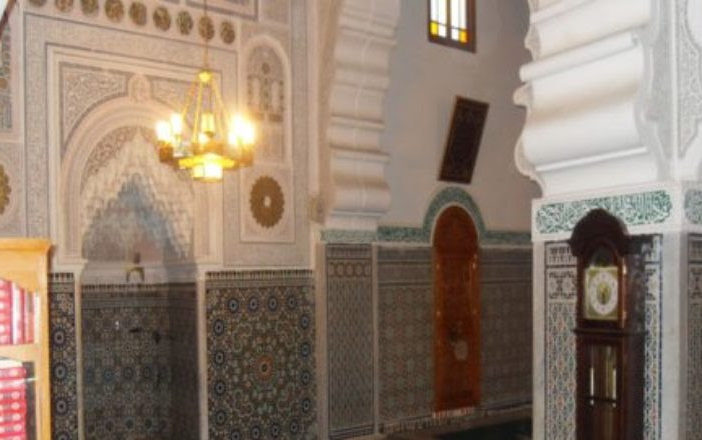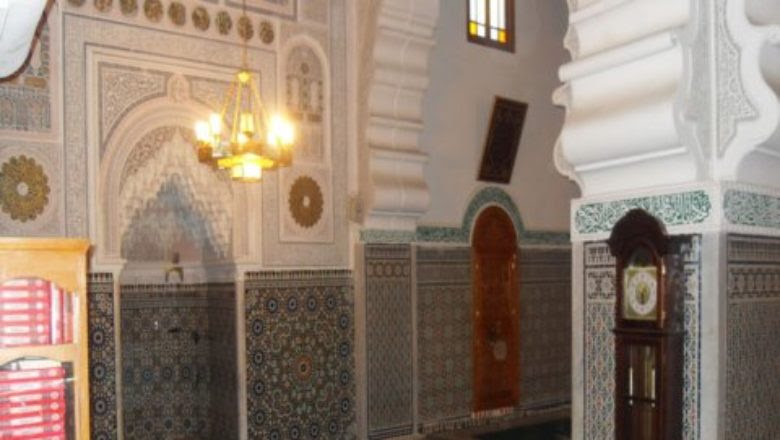Journal du Cameroun
by APA News
Fez, a city in Northeast of Morocco considered as the cultural capital of the kingdom of Morocco, is certainly famous for its fortified medina of Fez El Bali.
Fez is also famous for the mausoleum of Sheikh Ahmed Tijani Cherif (1737 or 1738-1815), the founder of Tijanyya, one of the main Islamic brotherhoods in Senegal.
” Fi sabilillah, Fi sabilillah! “, ” Coins,Coins please!” Beggars chant all the day long asking for handouts from passers-by and visitors.
Due to the narrowness of the streets, one is forced to worm one’s way through or lean one’s back against the wall from time to time in order to let others walk pass or avoid being hit by drivers pulling their loaded rickshaw.
It is at the end of a series of narrow and winding streets, where commercial activity is rife, that you can reach the mausoleum of Sheikh Ahmed Tijani.
The place where the holy man rests is also a “Zawiya” (place of prayers and declamations of religious songs) for the millions of followers of Tijanyya brotherhood, including Mouhamed Mbengue.
An electronics engineer in the automotive sector, this young Senegalese living in France made the trip from Paris to Fez, especially to “do ziarra (visit) to Seydina Cheikh.”
Comfortably seated in a corner of the mosque, he presents himself as a regular visitor of the holy place which he visits every time he has a few days of vacation.
He usually spends a couple of days in the capital of Tijanyya.
“We go out from here feeling that we have reloaded our spiritual batteries in order to go back to our normal life fulfilled, despite all the difficulties and challenges of life these days” he said with a broad smile.
For his part, Mamadou Ndiaye, who was on his first pilgrimage to Fez (168 km from Rabat), seemed especially “mesmerized” by the size of the mosque housing the Zawiya. Coming to Morocco to meet his in-laws, the civil engineer felt “obliged” to visit the first spiritual guide of the Tijaani Muslims.
“It is a huge pride and an immense joy,” the native of the Parcels Assainies (commune of the suburbs of Dakar) rejoiced, saying he feels privileged to find himself in the cradle of his Brotherhood.
The sun has declined for a few minutes in Fez, when the prayer of al-Maghrib (twilight) had just ended.
The Tajaani faithful prepare themselves for the “Hadratul Jumma”, a spiritual psalmody session in a group to praise Allah and pray for the Prophet (PBHU).
Inside the Zawiya, you must take a corridor bathed in light, walk through the mosque before entering the mausoleum of the religious guide. Among those found there meditating and engaged in prayer was Malick Sine.
Dressed in a purple sabador (traditional African dress) covered by a jacket to protect himself from the cold weather (13 degrees Celuis), this Senegalese living in Italy has been visiting Fez each year, since 2012, for a weekend of Ziarra.
Senegalese politicians are also making the trip to Fez, among them the member of parliament for Kaolack department(central Senegal), Soxna Awa Guèye. Having enjoyed a stay in Fez to complete the Ziarra, she felt “purified and propelled to a certain level of satisfaction”.
However, in the opinion of Serigne Abdoul Aziz Samb, religious preacher in the department of Mbour (central Senegal), the Moroccan residents of Fez do not visit much the mausoleum of Sheikh Ahmed Tijani Cherif.
“When you come here, you see mainly foreigners coming mostly from Sub-Sharan Africa and around the world. But the residents of Fez hardly come here to visit,” he said in a low voice, so as not to disturb the tranquility of his neighbours.
Tags : APA








